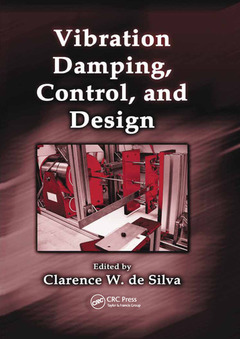Description
Vibration Damping, Control, and Design
Coordinator: de Silva Clarence W.
Language: English
Subjects for Vibration Damping, Control, and Design:
Keywords
Acoustic Power; Sound Pressure; Transmission Loss; Insertion Loss; Sound Pressure Level; Vibration Control Systems; Viscous Damping; Spindle Speed; Blade Adjustments; Noise Sources; Regenerative Chatter; SSV; Rotor Tuning; Chatter Frequency; A-weighted Sound Pressure Level; Time Domain Simulation; Face Milling Operation; Stability Lobe; Vibration Absorber; Hysteretic Damping; Wave Height; Bending Wave; Band Pressure Levels; Acoustic Subsystem; STFT
Publication date: 10-2019
· 17.4x24.6 cm · Paperback
Publication date: 04-2007
600 p. · 17.8x25.4 cm · Hardback
Description
/li>Contents
/li>Readership
/li>Biography
/li>
Reducing and controlling the level of vibration in a mechanical system leads to an improved work environment and product quality, reduced noise, more economical operation, and longer equipment life. Adequate design is essential for reducing vibrations, while damping and control methods help further reduce and manipulate vibrations when design strategies reach their limits. There are also useful types of vibration, which may require enhancement or control. Vibration Damping, Control, and Design balances theoretical and application-oriented coverage to enable optimal vibration and noise suppression and control in nearly any system.
Drawn from the immensely popular Vibration and Shock Handbook, each expertly crafted chapter of this book includes convenient summary windows, tables, graphs, and lists to provide ready access to the important concepts and results. Working systematically from general principles to specific applications, coverage spans from theory and experimental techniques in vibration damping to isolation, passive control, active control, and structural dynamic modification. The book also discusses specific issues in designing for and controlling vibrations and noise such as regenerative chatter in machine tools, fluid-induced vibration, hearing and psychological effects, instrumentation for monitoring, and statistical energy analysis. This carefully edited work strikes a balance between practical considerations, design issues, and experimental techniques.
Complemented by design examples and case studies, Vibration Damping, Control, and Design builds a deep understanding of the concepts and demonstrates how to apply these principles to real systems.
These books may interest you

Active and Passive Vibration Damping 119.36 €

Computer Techniques in Vibration 74.82 €


